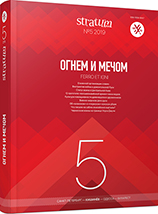Кочевническое погребение на левобережье Нижнего Дуная в контексте изучения культуры древних венгров
Nomadic Grave on the Left Bank of the Lower Danube in the Context of Studying the Culture of the Ancient Hungarians
Author(s): Mihail M. Fokeev, Maksym V. Kvitnytskyi, Nicolai P. Telnov, Sergey D. Lysenko, Sergey N. Razumov, Vitalii S. SinikaSubject(s): History, Archaeology, Middle Ages, 6th to 12th Centuries
Published by: Издательский дом Stratum, Университет «Высшая антропологическая школа»
Keywords: Left bank of the Lower Danube; Earlier Middle Ages; Hungarians; grave; battle knives; arrow; quiver set; axe; fragments of golden foil; face image
Summary/Abstract: The article analyzes the early medieval burial complex Plavni-II 1/2, studied in 1990 on the left bank of the Lower Danube. The grave was sunk into an Early Bronze Age barrow. Grave goods included a pair of battle knives, bone plates for a bow, a quiver with arrows, a golden foil. Image of a male face is on one of the fragments of the foil. The analysis of the burial rite and grave goods allowed dating the burial Plavni-II 1/2 to the second half of the 9th — the first decades of the 10th centuries and associate it with the ancient Hungarians. The investigated grave complements the list of funerary sites, marking the territory of the Hungarian tribes before they found their homeland.
Journal: Stratum plus. Археология и культурная антропология
- Issue Year: 2019
- Issue No: 5
- Page Range: 333-342
- Page Count: 10
- Language: Russian
- Content File-PDF

